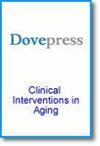Factors Affecting Usage of a Digital Asthma Monitoring Application by Old-Age Asthmatics Living in Inner Central Portugal
IF 3.7
3区 医学
引用次数: 0
Abstract
Purpose: To analyse factors affecting the ability to use the digital asthma monitoring application Mask-Air® in old-age individuals living in inland Portugal.Patients and Methods: In this observational study, patients with medically confirmed asthma who agreed to participate were interviewed and subdivided into Non-users Group: those who could not use the application and Users Group: those who could. Sociodemographic and psychological data, comorbidities, and asthma status were compared between groups. Assessment of reasons for refusal was based on a 6-item questionnaire.
Results: Among the 72 sequentially recruited patients (mean age±SD 73.26± 5.43 yrs; 61 women; 11 men), 44 (61.1%; mean age±SD 74.64± 5.68 yrs; 38 women; 6 men)) were included in Non-users Group and 28 (38.9%; mean age±SD 71.11± 4.26 yrs; 23 women; 5 men) in Users Group. Non-users Group patients were significantly older, had lower socioeconomic level, and more frequently had severe asthma (25% vs 3.6%; Odds ratio=0.08 (95% CI=0.01– 0.81; p=0.033)) and diabetes (32.6% vs 7.4%; Odds ratio=0.17 (95% CI=0.03– 0.80; p=0.025)) than Users Group. The main reasons for not using the App were “Lack of required hardware” (n=35) and “Digital illiteracy” (n=26), but lack of interest to use the App among those who had conditions to use it was uncommon.
Conclusion: Most old-age asthmatics living in Beira Interior either lack a smartphone or digital skills, which are significant obstacles to implementing app-based monitoring studies.
Plain Language Summary: This study was done to see whether it was possible to use a mobile phone application (App) to help old-age asthmatics living in inner Central Portugal better monitor and self-manage their disease.
The researchers interviewed a group of 72 patients with proven asthma who agreed to participate in the study. This group was subdivided into two subgroups: Non-users Group (44 patients) included those who could not use the App because they did not have a smartphone; Users Group (28 patients) included those who had all the conditions to use the App. Patients were helped to download the App (called MASK-Air), were given a thorough explanation about it, and about how it should be used on a daily basis to monitor their asthma symptoms.
The researchers found that patients in Non-users Group were significantly older, had worse socioeconomic conditions, and more often had severe asthma and diabetes. They also discovered that the main reasons for not using the App were lack of a smartphone and not knowing how to use a smartphone.
These results show that lacking a smartphone and not knowing how to use digital tools are frequent situations in old-age asthmatics living in inner Central Portugal, and these may be obstacles for patients in monitoring their own asthma symptoms.
Keywords: asthma, mHealth, digital literacy, disease monitoring, old-age
影响葡萄牙内中部地区老年哮喘患者使用数字哮喘监测应用程序的因素
目的:分析影响葡萄牙内陆地区老年人使用数字哮喘监测应用 Mask-Air® 能力的因素:在这项观察性研究中,我们对同意参与的医学确诊哮喘患者进行了访谈,并将他们细分为非用户组(无法使用该应用的患者)和用户组(可以使用该应用的患者)。两组患者的社会人口学和心理数据、合并症和哮喘状况进行了比较。对拒绝原因的评估基于一份 6 项调查问卷:在先后招募的 72 名患者(平均年龄±SD 73.26± 5.43 岁;61 名女性;11 名男性)中,44 名(61.1%;平均年龄±SD 74.64± 5.68 岁;38 名女性;6 名男性)被纳入非使用者组,28 名(38.9%;平均年龄±SD 71.11± 4.26 岁;23 名女性;5 名男性)被纳入使用者组。与用户组相比,非用户组患者年龄明显偏大,社会经济水平较低,患有严重哮喘(25% vs 3.6%;Odds ratio=0.08 (95% CI=0.01- 0.81; p=0.033))和糖尿病(32.6% vs 7.4%;Odds ratio=0.17 (95% CI=0.03- 0.80; p=0.025))的比例更高。不使用该应用程序的主要原因是 "缺乏所需硬件"(35 人)和 "数字文盲"(26 人),但在有条件使用该应用程序的人群中,缺乏使用兴趣的情况并不常见:这项研究旨在了解是否有可能使用手机应用程序(App)来帮助居住在葡萄牙中内城的老年哮喘患者更好地监测和自我管理疾病。研究人员采访了72名同意参与研究的确诊哮喘患者。研究人员对 72 名同意参与研究的确诊哮喘患者进行了访谈,并将这一群体细分为两个小组:非用户组(44 名患者)包括那些因为没有智能手机而无法使用应用程序的患者;用户组(28 名患者)包括那些具备使用应用程序所有条件的患者。研究人员发现,非用户组的患者年龄明显偏大,社会经济条件较差,更多患有严重哮喘和糖尿病。他们还发现,不使用该应用程序的主要原因是没有智能手机和不知道如何使用智能手机。这些结果表明,没有智能手机和不知道如何使用数字工具是居住在葡萄牙内中部的老年哮喘患者经常遇到的情况,而这些可能是患者监测自身哮喘症状的障碍。 关键词:哮喘;移动医疗;数字扫盲;疾病监测;老年人
本文章由计算机程序翻译,如有差异,请以英文原文为准。
求助全文
约1分钟内获得全文
求助全文
来源期刊

Clinical Interventions in Aging
GERIATRICS & GERONTOLOGY-
CiteScore
6.20
自引率
2.80%
发文量
193
期刊介绍:
Clinical Interventions in Aging, is an online, peer reviewed, open access journal focusing on concise rapid reporting of original research and reviews in aging. Special attention will be given to papers reporting on actual or potential clinical applications leading to improved prevention or treatment of disease or a greater understanding of pathological processes that result from maladaptive changes in the body associated with aging. This journal is directed at a wide array of scientists, engineers, pharmacists, pharmacologists and clinical specialists wishing to maintain an up to date knowledge of this exciting and emerging field.
 求助内容:
求助内容: 应助结果提醒方式:
应助结果提醒方式:


